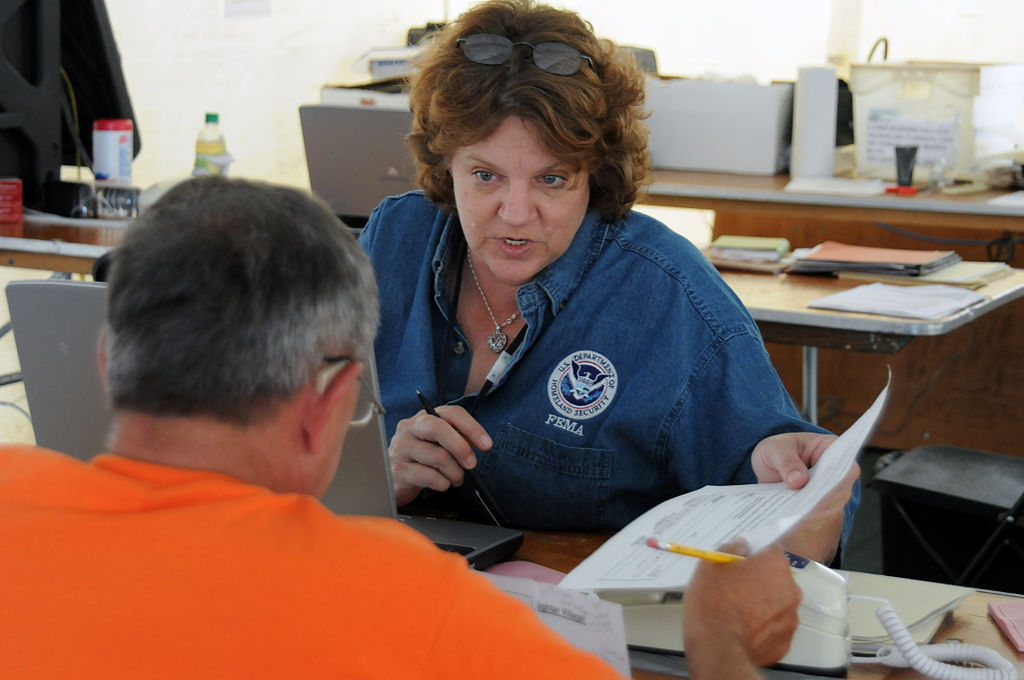FEMA reforms: How new benefits and streamlined processes may help survivors

Transformational change. That’s what the Federal Emergency Management Agency (FEMA) says they want to see with the reforms to disaster assistance to support survivors that will go into effect on March 22, 2024.
The policy changes enacted in this Interim Final Rule (IFR), spurred by President Biden’s Executive Order on Addressing Racial Equity and Support for Underserved Communities, include new regulatory text that is legally binding once it goes into effect. These long-awaited changes were informed by FEMA’s “equity sprint” in 2021 and further listening tours in disaster-impacted communities in 2022.
Throughout this learning period, FEMA and other federal agency representatives engaged in conversations with both disaster survivors who had experience with applying for FEMA Individual Assistance and the frontline workers who help survivors navigate recovery (and, of course, these frontline workers are often also survivors who are still struggling to recover).
At CDP, we are cautiously optimistic about these changes and how they might support a more equitable recovery for all communities and populations affected by disasters. We’ve advocated for these processes and policy updates along with many of our funding and grantee partners and are pleased to see them implemented. For a long time, barriers to federal support for disaster recovery have frustrated survivors, community leaders, community-based organizations, philanthropic organizations and even FEMA personnel. We are anxious to see these changes implemented and to witness the transformation.
So, what is included in these reforms?
There are three areas of reform included in these updates:
- Establish new benefits: FEMA standardizes “serious needs assistance” (formerly critical needs assistance) by making a $750 payment available in all federally declared disasters that receive Individual Assistance. In other words, eligible households will have quick relief with cash to access essential items like food, water and more. Additionally, FEMA added displacement assistance. This helps disaster survivors who cannot return home following a federally declared disaster by providing upfront financial assistance that helps survivors pay for immediate housing needs.
- Cut red tape and expand eligibility: This is critically needed to help build trust and expand access, so we are particularly interested in seeing the results of implementing changes here. FEMA will no longer require survivors to apply for a U.S. Small Business Administration (SBA) loan before consideration for assistance. (SBA loans are still a viable option for some survivors.) Survivors who are underinsured and receive less from their insurance company than they need to recover fully can seek assistance from FEMA to help them cover repairs that insurance might not. Homeowners who do not possess a clear title but have other satisfactory means of proving ownership of their home will now be eligible for Emergency Home Repair assistance. FEMA has also expanded “habitability criteria” for survivors, which means they may now qualify for assistance even if their home had pre-existing damage or “deferred maintenance.” Survivors with disabilities or medical conditions may also secure support to make their homes more accessible than they were pre-disaster. Entrepreneurs or the self-employed may now qualify for financial support to replace tools and equipment. Personal or family computers damaged by a disaster may be eligible for replacement. Survivors may also receive assistance for additional computers required for work, school, or access and functional needs.
- Simplify the application process: Receiving FEMA support has had many barriers, often preventing those with the greatest needs from accessing resources. FEMA will now streamline temporary housing assistance applications, remove barriers for late applicants and simplify the process for appeals of FEMA decisions.
- Establishing displacement assistance: Survivors may now apply for assistance with housing or lodging expenses related to the early months of displacement from their homes without needing to have signed a lease. Survivors who access Displacement Assistance may still be able to access rental assistance if their displacement is prolonged and they enter a rental contract.
What should funders know?
Though equitably distributed and flexible philanthropic funds remain critically important to community recovery from disaster, the resources available through government programs are more extensive. Making federal funds more streamlined and easily accessible will allow philanthropy to direct funding more strategically to build community resilience. Here are some things to consider as these changes are implemented:
- Though these changes are significant, they still do not address all the needs of those affected by federally declared disasters. Grantmakers should prioritize support that addresses recovery gaps, particularly among marginalized populations without access to these resources, such as people who were unhoused before a disaster but are nonetheless displaced or otherwise significantly impacted, people or families who were unstably housed or “doubled-up” with another household before the disaster event, and undocumented immigrants.
- Most disasters that devastate communities do not rise to the level of being “federally declared,” so federal resources will not be deployed in many cases anyway. It is critical that philanthropy support communities where resources are hard to come by to provide recovery opportunities for all. We call these low-attention disasters and encourage our funding partners to focus on the needs of those affected by hazardous events that receive less attention and fewer resources.
- We always say, “Every funder is a disaster funder.” We also define disasters as “when a hazard meets a vulnerability.” We encourage funders to continue to address the systemic issues that marginalize communities – providing access to education, health care and mental health care; addressing homelessness and lack of affordable housing; fighting against racism and injustice; and more. If we work together to address these issues before a hazardous event, we will be less likely to have a disaster in the first place.
- Continue to advocate for more consistent and sustainable federal funding for disasters – before, during and after events. These FEMA changes are a huge step in the right direction, but much more needs to happen for our communities to prepare for and withstand the ever-increasing frequency and intensity of disasters due to climate change.
- Provide your comments on these changes through the public comment period, which will last through July 22, 2024, to affirm the need to support disaster survivors and communities through an equity lens. Affirming FEMA’s legal authority in your public comment may help if future administrations attempt to contest or reverse the reforms enacted by this IFR through the courts.
Note that these changes won’t take effect until March 22. That means all the communities currently recovering from past disasters and any that might feel the impact before that date will not see these reforms work for them.
If we can be helpful to you as you consider your disaster funding strategy with regard to these changes, please reach out. We are always happy to help.

